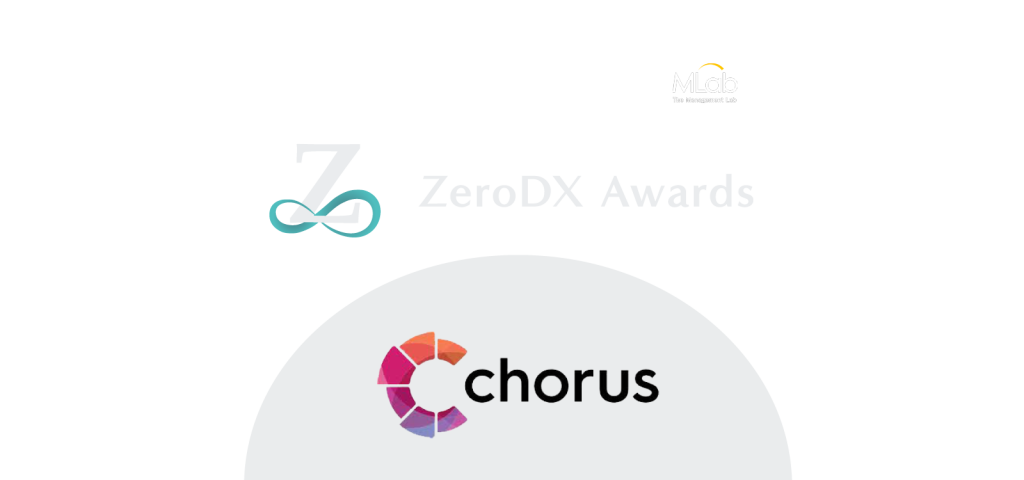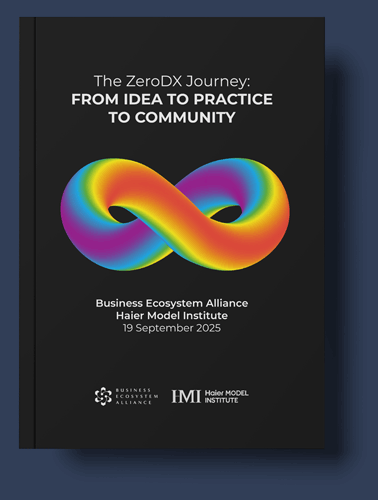
Chorus Australia: Redefining Community Services with a Flat Organizational Approach
Overview
Chorus Australia, established in 1970, is a leading not-for-profit organization dedicated to enhancing community wellbeing through aged care, disability support, and mental health services. With a workforce of over 800 employees and volunteers, Chorus operates across Perth, Western Australia, as well as two regional cities. The organization's purpose is to enable local communities to thrive.
Fresh Approach to Community Service
After extensive consultation and co-design with employees and community members (and with a slight delay due to the COVID pandemic), Chorus launched our “Fresh Approach to Community Service” in late 2021.
The research and co-design shaped an operating model and culture based on five key Principles. They are:
- Everyone can thrive | Shifts the focus of care work from one of deficit thinking to one which creates a context of flourishing through networks of relationships.
- Start local | Creating structures, systems and networks of relationships that are embedded in local communities.
- Put the ‘community’ back in community services | Building on the strengths that already exist in local communities and activating local citizenship.
- Get to know the care ecosystem | Means being intimately connected with the local formal and informal care ecosystem and being a conduit to open access pathways for people who are more vulnerable in the community.
- Teamwork sustains kindness | A deeply held belief that how we show up in the community is the results of our internal interactions. We have moved from a culture of delivering compliance care to one that develops kind and caring relationships.
Chorus recognised that a radical transformation of all aspects of the organization's systems, structures, values, and processes would be required to fulfill these strategic intentions. This is why following the introduction of The Fresh Approach to Community Service it also initiated a complete rehaul of its organizational structure.
Radical Decentralization
Chorus has reimagined its organizational structure, embracing a radical decentralization model. Here are the core elements of the transformation from Chorus 1.0 to Chorus 2.0:
| Distance | Centralized service planning and coordination with a "head office" creating a distance between service provision and service management | Connection | Service planning, coordination and delivery all managed by a small local team who are connected to their local community & customers |
| Siloed | Support work is managed around a narrow skill set and funding type | Holistic | Support work is allocated based on a broad skill set and customer needs |
| Hierarchy | Formal management with seven (7) layers of hierarchy | Self-organizing | No formal managers and three domains of stewardship and accountability |
| Narrow Decision Control | Centralized decision-making with individual control | Distributed Decision Authority | Collaborative and consent-based decision-making underpinned by a co-designed "playbook" |
| Care Providers & Admin | Service delivery teams and "back office" teams | Everyone Provides Support | Customers and care delivery is everyone's business. Everyone spends time with Chorus customers. |
Today, the organization consists of 20 small, self-sufficient teams that function autonomously, significantly reducing traditional hierarchical layers. This flat structure empowers teams to make decisions tailored to the needs of their local communities, fostering closer relationships and more effective service delivery. By prioritizing local engagement over centralized management, Chorus enhances its ability to respond quickly and flexibly to community needs.
Customer-Centric Model
The multi-skilled team approach means that Chorus customers have access to a small team of support workers who know them well and stay up to date with their changing needs and circumstances. Local teams know their customers well and share information, insights, and concerns in the weekly team meeting. If a customer has a question or a concern the people that they talk to are the people who are providing them services. It also means that when one member of the team is unavailable another member of the team can easily step in.
The transition to Chorus 2.0 has ensured deep connection between every Chorus employee and their end customer resulting in increased empathy and understanding as well as improved patient outcomes.
Chorus is also increasingly committed to delivering a positive social impact in the local communities in which they operate, and this local model and relationally oriented way of working is already showing positive impacts.
- The intergenerational playgroup that brings together elders and young families creating rich connections.
- The All-Abilities Disco that provides opportunities for a shared social experience for Chorus customers and customers of other providers who don’t have access to similar community facilities.
- The Ability Arts project offers a shared art, music and pottery space for Chorus customers and other community groups to join in creating art.
- A recent "Tea and Technology" initiative that brings together elders and teens from a local high school to support elders feel confident with their technology but which offers a much richer experience of sharing wisdom.
Vibrant Company Culture
Chorus fosters a vibrant and inclusive company culture, emphasizing community, collaboration, and continuous improvement. The organization is committed to holistic wellbeing and ongoing development for both employees and volunteers. To effectively promote community thriving, Chorus people have access to a team of trained wellbeing coaches who conduct regular team and individual well being debriefs.
Formal learning is well supported across Chorus, exemplified by the approximately 100 people who are completing qualifications in community services, mental health or leadership and management. The richness of their learning culture is best exemplified through:
- their health check process (a peer review internal audit process) and
- their playbook community of practice where team members across Chorus continually come together to create and share new knowledge and support collaborative decision making, skill development and problem solving.
One of the unique features of the culture at Chorus is the Contribution Diamond - a concept developed in-house in their quest for a remuneration method that would better fit their new progressive organizational structure. The concept features two dimensions of personal contribution - "Skills and Capabilities" and "Leadership", where each dimension has three distinct levels.
The definition of “contribution” arose from some basic principles of job complexity, but more importantly from observation and employee feedback on what “good” looked like in the organization now.
They came up with three different levels in "Skills & Capabilities" (A, B, & C), and three distinct levels in "Leadership" (1, 2, & 3). The three levels of Skills & Capabilities and the three levels of Leadership were then combined into 9 unique scores as shown in the diamond below: 1A, 1B, 1C, 2A, 2B, 2C, 3A, 3B, and 3C.
All these different combinations were then coupled to an actual remuneration package, where each combination belongs to a predefined pay grade. This system moves away from traditional hierarchical pay scales, ensuring fair compensation that reflects the value - or “contribution” - each person brings to the organization.
By promoting equity and motivation through this approach, Chorus supports a culture of contribution and mutual respect.
Outcomes
After seven years of ongoing transformation, Chorus is starting to show that its progressive design and investment in people leads to better outcomes for employees, volunteers, customers, communities and the business. Client feedback consistently highlights the positive impact of Chorus’ human, tailored, community-oriented services. In an industry characterized by low employee engagement, Chorus is now tracking best-in-class employee retention and safety. In addition, productivity - which Chorus measures as “time with customer” (TWC) - has increased over 15 per cent in the last 18 months.
Ultimately, Chorus has undertaken these changes in order to become closer to customers, and more effective at fostering thriving local communities. The transformation is ongoing, and the organization is now focused on introducing new tools and techniques which increase belonging and connectivity at a grass roots level.
Sources
- Chorus Annual Reports
- Chorus About Us
- Chorus Our Stories
- Corporate Rebels Article on Remuneration Methods


